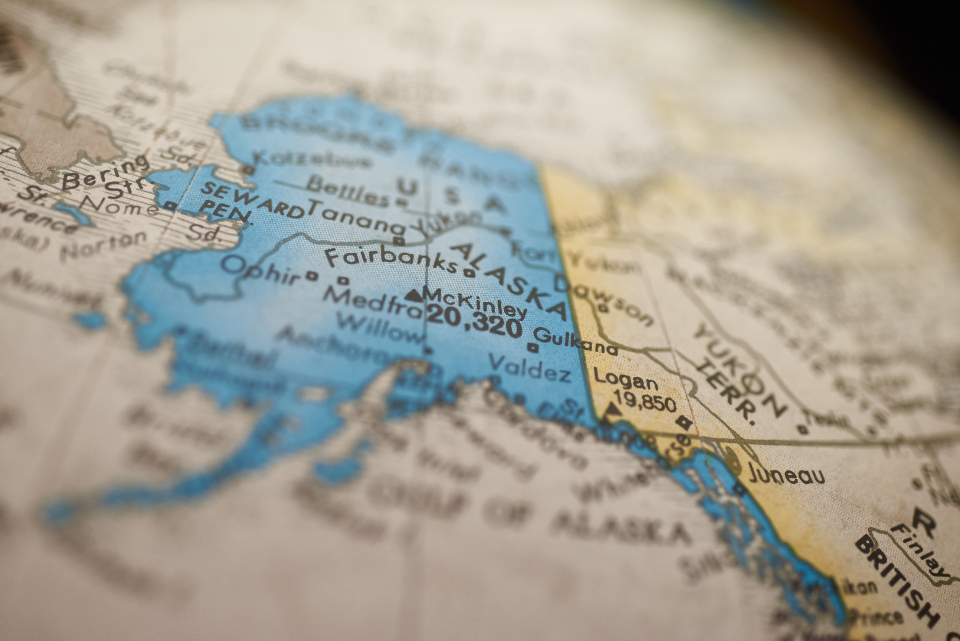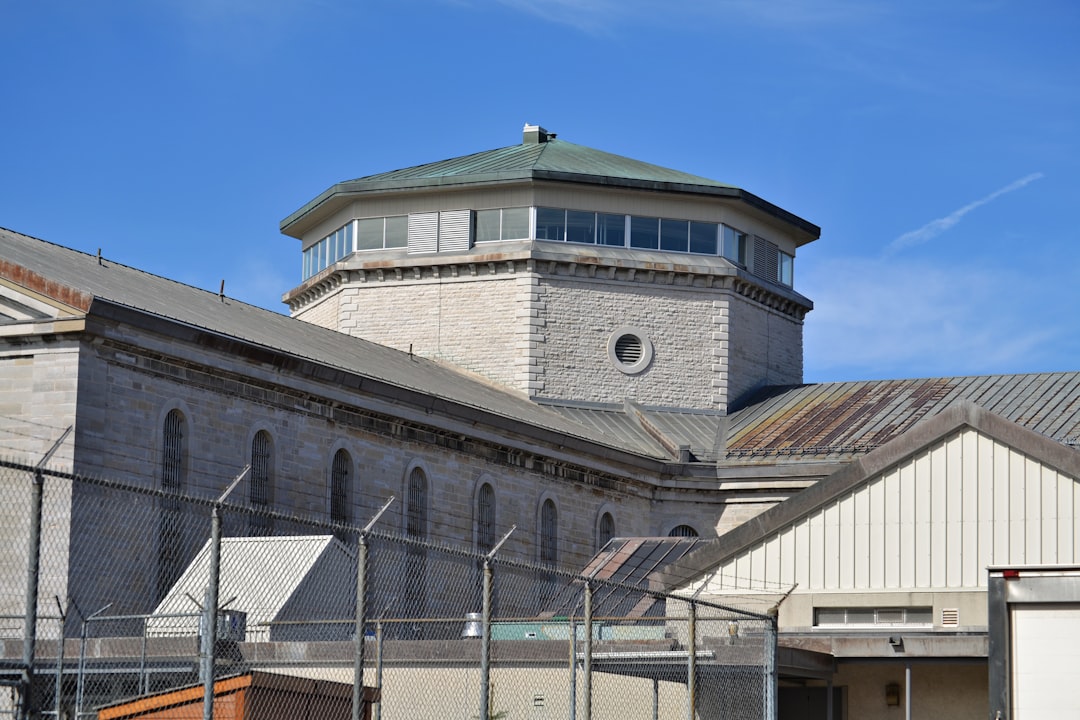The Mind-Blowing Measurement That Changes Everything

Picture this – you’re looking at a map of the United States, and you spot tiny Alaska tucked away in the corner like an afterthought. But what your eyes can’t tell you is that this seemingly distant state holds one of America’s most jaw-dropping geographical secrets. Alaska’s tidal shoreline measures over 46,600 miles, which is longer than the coastlines of all the other 49 states combined. This isn’t some quirky trivia fact – it’s a geographic reality that reshapes how we think about America’s relationship with the sea. For perspective, the second-longest coastline in the US belongs to Florida at just 8,436 miles. That means Alaska has more than five times the coastline of the Sunshine State, despite being thousands of miles away from most Americans’ daily lives.
Breaking Down the Numbers That Defy Logic

The top ten states with the most coastline are Alaska (33,904 miles), Florida (8,436 miles), Louisiana (7,721 miles), Maine (3,478 miles), California (3,427 miles), North Carolina (3,375 miles), Texas (3,359 miles), Virginia (3,315 miles), Michigan (3,224 miles), and Maryland (3,190 miles). When you add up all nine of those other states, you get approximately 44,188 miles of coastline. Alaska alone beats that total by more than 1,500 miles. Alaska has 6,640 miles of coastline and, including islands, has 33,904 miles of shoreline, with the estimated tidal shoreline reaching 47,300 miles. These numbers sound impossible until you realize what’s really going on beneath the surface of this geographical mystery. Alaska’s coastline represents 50% of the entire United States coastline, with Alaska having 6,640 miles of coastline while the entire U.S. has 12,383 miles.
The Island Secret Behind Alaska’s Coastal Dominance

While the mainland of Alaska alone places the state at the top of the rankings for longest coastline, the more than 2,600 named islands of Alaska is why the coastline of Alaska is greater than all the other states combined, with Alaska being the U.S. state with the most islands at 2,670. Think of it like measuring the perimeter of a snowflake versus measuring the perimeter of a simple circle – the more complex the shape, the longer the boundary becomes. One of the reasons why Alaska has such an extensive coastline is due to the thousands of islands, with Alaska having 2,670 islands, many of which are mostly uninhabited or protected wildlife preserves. Each island, no matter how small, adds its own coastline to Alaska’s total measurement. Alaska’s Arctic Ocean coastlines have 272 barrier islands, accounting for 12.7 percent of the world’s inventory, which is remarkable considering most other West Coast states have no barrier islands at all.
The Aleutian Chain: America’s Hidden Archipelago

The Aleutian Islands consist of a chain of 14 main, larger volcanic islands and 55 smaller ones, stretching like stepping stones across the North Pacific. Sweeping westward 1,200 miles from the Alaska Peninsula, the Aleutian Islands are one of the world’s most beautiful, dramatic regions. These islands aren’t just geographical curiosities – they’re active participants in one of Earth’s most dynamic geological processes. The Aleutian Islands, with their 57 volcanoes, form the northernmost part of the Pacific Ring of Fire. The Aleutian Islands in Alaska run parallel to the Aleutian Trench, with both geographic features continuing to form as the Pacific Plate subducts beneath the North American Plate, and the Aleutian Islands have 27 of the United States’ 65 historically active volcanoes. Every single mile of coastline on these remote islands contributes to Alaska’s staggering total.
Southeast Alaska’s Maze of Waterways

The Alexander Archipelago consists of about 1,100 islands off the coast of southeastern Alaska, named by the U.S. Coast and Geodetic Survey in 1867 to honour Alexander II, tsar of Russia. This region represents another massive contribution to Alaska’s coastline total, creating a labyrinth of channels, inlets, and passages that multiply the state’s coastal measurements exponentially. The irregular shorelines of the islands are separated from the mainland by deep, narrow channels that form part of the picturesque Alaska Marine Highway system, or Inside Passage. The area is rugged and contains many long, U-shaped, glaciated valleys, many of which terminate at tidewater, and the Alexander Archipelago is home to Glacier Bay National Park. Each fjord, each bay, each inlet carved by ancient glaciers adds precious miles to Alaska’s coastal inventory.
The Geographic Giant That Dwarfs Texas

To truly grasp Alaska’s coastal dominance, you need to understand the sheer scale of the state itself. Alaska is 586,400 square miles, which is over twice the size of Texas. Alaska is the largest U.S. state by area, comprising more total area than the following three largest states of Texas, California, and Montana combined. Alaska constitutes about 16% of the total land area of the U.S., which stands at approximately 3.8 million square miles, meaning that Alaska alone is nearly one-fifth the size of the entire country. If Alaska were a country, it would rank as the 18th largest in the world, and you could fit approximately 19 other states into Alaska. This massive landmass naturally creates opportunities for extensive coastlines along multiple bodies of water.
Multiple Oceans, Multiple Coastlines

Several bodies of water border Alaska, with the Arctic Ocean and the Beaufort Sea to the north, the Chukchi Sea to the northwest, the Bering Sea and Bering Strait to the southwest and west, and the Pacific Ocean to the south. Unlike states like Florida or California that border just one ocean, Alaska’s unique position gives it coastline along three different seas and two major oceans. Alaska is bordered by Canada on the east, the Arctic Ocean in the North, the Bering Sea to the west, and Pacific Ocean in the south, consisting of 36,000 square miles of coastline. This multi-directional coastal exposure means that Alaska touches more water bodies than any other U.S. state. The state’s position as America’s northern frontier places it at the intersection of major oceanic systems, each contributing miles upon miles to the total measurement.
Glacial Legacy: How Ice Shaped the Coastline

Fault tectonics, volcanism, glacial, fluvial processes, sea level variations, and yearly sea ice have all played a role in shaping Alaska’s coastal geology, with rugged, rocky coastal sections with sheltered fjords characterizing the southeast portion of Alaska’s coast. Numerous glaciers and ice fields occupy the mountain ranges of Alaska, and outside the two major ice sheets that cover most of Greenland and Antarctica, glaciers in Alaska represent about 13 percent of the mountain glaciers and ice caps area on Earth. Glaciers alone often change Alaska’s coastline dramatically. The constant advance and retreat of glacial ice over thousands of years has carved deep fjords, created countless bays, and sculpted the intricate coastline that exists today. Since measurement began, the area has experienced rapid deglaciation, with many large glaciers retreating 40, 60, even 80 km, though it is still unclear whether the rapid recession is part of the natural cycle of tidewater glaciers or is an indicator of longer-term climate change.
The Measurement Challenge: Why Coastlines Are Tricky

Coastlines are difficult to measure due to tide and weather that reshapes the shore, but Alaska by far has the most coastline due to all of the smaller islands that inhabit it, along with the vastness of the terrain. The challenge of measuring any coastline lies in what geographers call the “coastline paradox” – the more detailed your measurement, the longer the coastline becomes. The difference between a shoreline and a coastline is that the contour, outline, or boundary of a coast is known as the coastline, whereas the shoreline is the boundary between land and water. When you factor in every tiny inlet, every small bay, every rocky outcrop along Alaska’s thousands of islands, the numbers quickly become staggering. Mapping Alaska’s coastline involves flying helicopters low along the entire shoreline, collecting high-resolution imagery and detailed classifications of the coast’s geologic features and intertidal biological communities.
Remote Islands That Few Americans Know Exist

The Aleutian Islands extend westward over 1,100 miles from the southwestern corner of the Alaska mainland, and include the Pribilof Islands which lie to the north, distributed over an area of approximately 100,000 square miles, a region slightly larger than Virginia, Kentucky and Maryland combined. Many of these islands are so remote that they’re rarely visited by anyone except researchers and indigenous communities. Several communities are located along the Aleutian Islands, including Akutan, Cold Bay, False Pass, King Cove, Sand Point, Unalaska, and Adak, with these communities sharing a common heritage and reliance on the North Pacific Ocean and Bering Sea. Crossing longitude 180°, the archipelago contains both the westernmost and easternmost parts of the United States by longitude, with the westernmost U.S. island being Attu Island, west of which runs the International Date Line. Each of these distant outposts contributes its own miles of coastline to Alaska’s incredible total.
A Coastline Under Constant Change

Accelerated by climate change, coastal erosion along the Arctic coast is chronic, widespread, and likely to worsen, posing a threat to critical defense and energy infrastructure, natural shoreline habitats, and local Native people. Alaska’s coastline isn’t just extensive – it’s also dynamic, constantly changing due to natural and human factors. USGS studies coastal change along Alaska’s 66,000 miles of complex coastline, which stands as a tremendous resource to the Nation, with Alaska having the longest coastline in the Nation. Alaska’s glaciers are in steep decline and among the fastest melting glaciers on Earth, and one of the impacts of climate change on maritime glaciers is an increase in the altitude at which water falls as snow. As glaciers retreat and sea levels change, Alaska’s already impressive coastline measurements continue to evolve, potentially adding even more miles to an already record-breaking total.
The Strategic Importance of America’s Longest Coastline

By air or by boat, the coastline of Alaska is the lifeline to the rest of the state, with many towns not accessible by highway even in summer, and Juneau being America’s only state capital that you cannot access by road. This extensive coastline isn’t just a geographical curiosity – it’s a strategic asset that has shaped Alaska’s role in American defense and commerce. The Bering Strait is home to two major shipping routes, the Northwest Passage and the Northern Sea Route, with Anchorage being less than a ten-hour flight to Tokyo, Frankfurt, or New York City, making Ted Stevens International Airport in Anchorage one of the busiest cargo airports in the world. Alaska’s economy benefits significantly from its oil industry, which accounts for about 25% of the U.S. total oil production, and the average personal income is among the highest in the nation. The vast coastline provides access to rich fishing grounds, shipping lanes, and natural resources that drive both Alaska’s economy and America’s strategic interests in the Arctic and Pacific regions.
Did you ever imagine that one state could hold more coastline than the rest of an entire continent combined?








